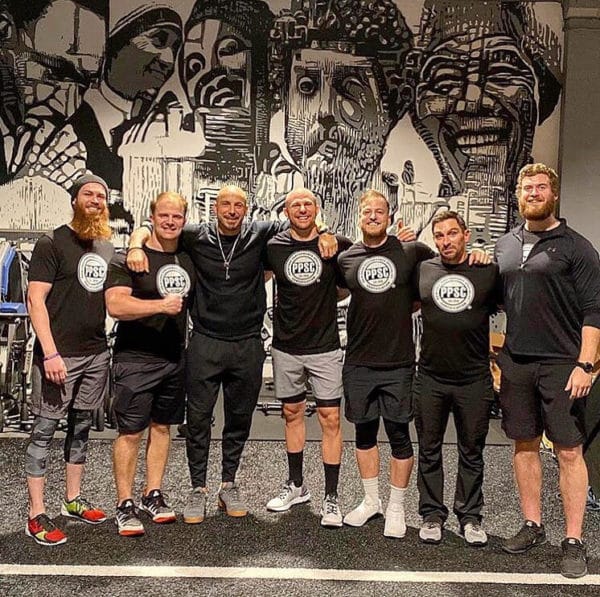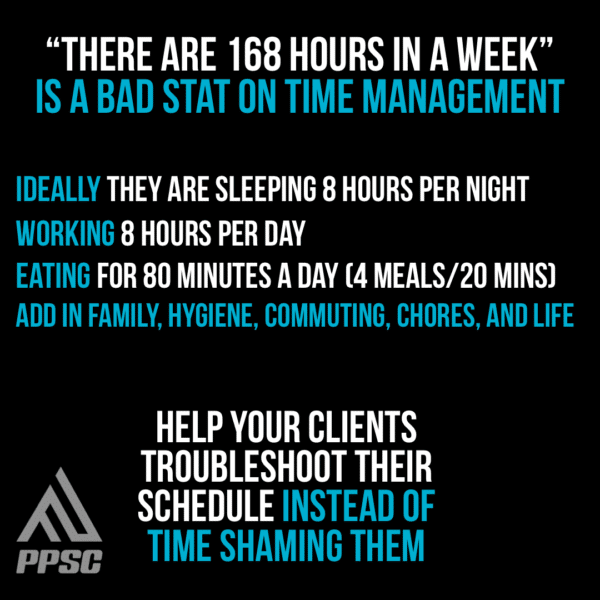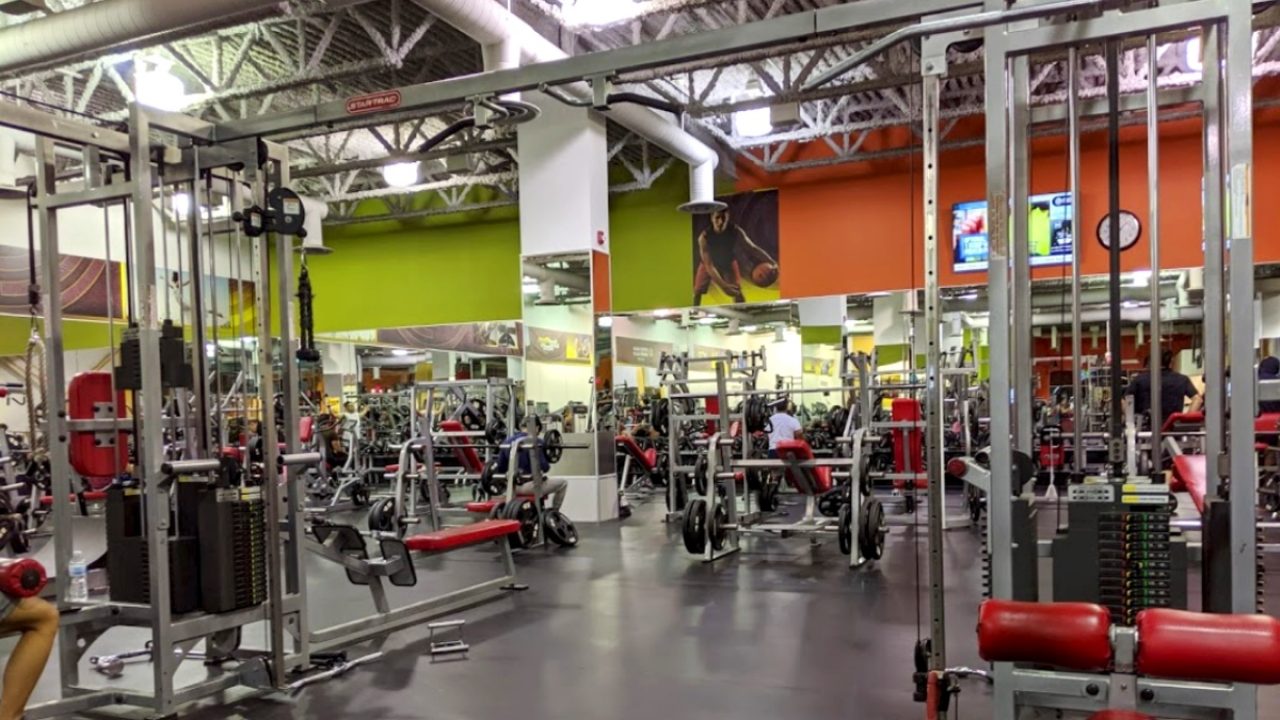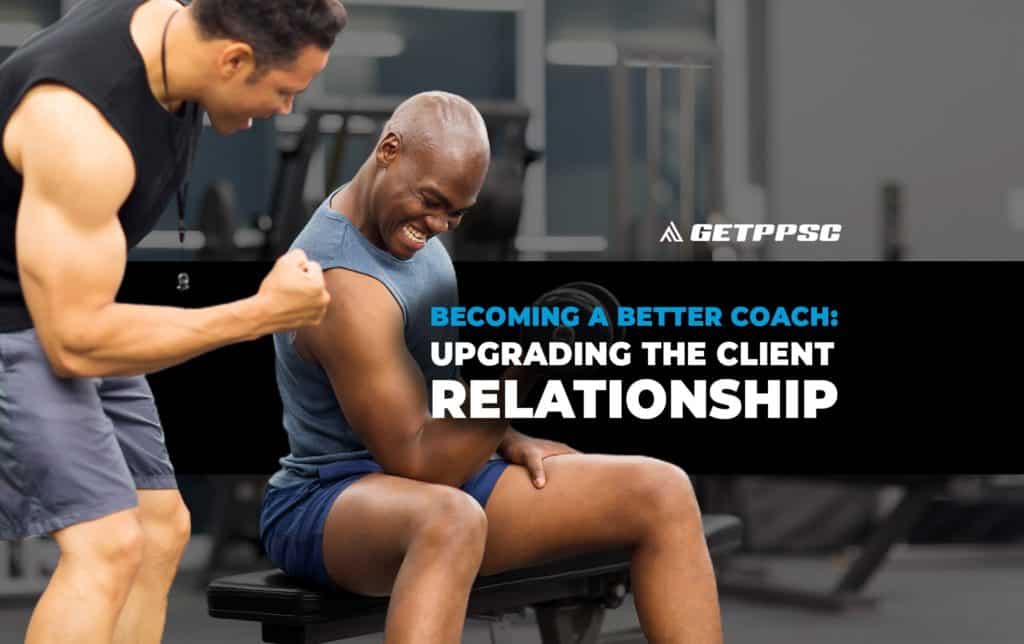The Contextual Rant
We’ve had some passionate, evidence-based, smart calls to action on the PPSC blog so far and I’m all for it. Our industry is struggling to make the leap to a more professional, more essential place and having more knowledgeable and experienced trainers is going to help us get there.
BUT…
There’s something else that stands out to me as being one of the reasons the PPSC team is making such waves in the industry. Having connected with these 20+ world-class educators via Zoom presenter meetings and a constant stream of inside jokes, as well as working with and learning from about half that number in live certification settings, there’s something more to the camaraderie and shared purpose than just good science.
These are exceptionally awesome humans. It’s more than just external accolades and their CVs. It’s more than just a diverse group of experienced professionals. It’s more than just knowledge & a polished process. It’s something like: the smartest trainer in the gym is usually not the busiest. Or: the know-it-all doesn’t have many friends.

JR and Luka Hocevar (Vigor Ground) presented a group of the PPSC instructors with some inspiring philosophies as we prepared to return to live education after the first few months of the Covid lockdown. Our mission was to “educate, inspire & entertain” the participants who showed up for the 2-day PPSC course. It was a whirlwind few days but I made some notes on the plane on the way home and it’s been percolating in my mind ever since.
If we’re truly going to change the world, then we’re going to have to focus on changing Monday morning. What that means to me is that it’s awesome to be in a room with 20-100 passionate trainers/coaches/clinicians and it’s an incredible way to charge your batteries. But if you don’t walk into your job on Monday morning with some immediately actionable changes, then nothing really changes.
So, hell yes to the squat, hinge, lunge, push, pull, carry, rotation, pillar brace, joint centration, total body synergistic spiral torque irradiation, breathe, scale it back, pain-free ROM and intelligent pyramid capability-based programming, etc awesomeness. Seriously – hell yes to all of that. But if that was all it took to change the world then everyone would sign up for P4 with John himself and the rest of us would be stuck in some 9-5 bureaucratic bullshit.
Work diligently to become a better trainer – every damn day. But what’s beyond the science, screening, assessment, cueing, recomposition and periodization?
YOUR HUMANITY
Tell me something more targeted, more brutalized and more crucial than that, especially given the last year.
If you don’t want to read about Black Lives Matter, the atrocities at the US-Mexican border, the attack on LGBTQ+ rights and lives, the long-term effects of colonization and inequitable policy, etc. that’s fine. BUT IF YOU TRY TO PRETEND THAT THESE THINGS DON’T MATTER as a coach/trainer, then you are missing a hugely important opportunity for empathy, connection, empowerment and security in your career. These things matter as a human. Your clients show up in their humanity. And (maybe despite your best efforts) so do you.

Now, I’m going to stop for a moment. Because I’m a fitness educator. And while that gives me a platform to show up in my own humanity, I believe in showing up first and foremost as an athlete, trainer, coach & fitness professional. That doesn’t mean I hide my humanity and the unique combination of traits that make me who I am. But it does mean that I learn, work and present on certain topics. And not on others.
So here are some of the people I have showed up to learn other & important things from, and in whom I have invested my time, effort, energy and money over the past year.
If you’re interested in checking them out, you can find them (and their other platforms) on IG:
@mariebeech @eakinwale @iamchrissyking @nativein_la @autumn.peltier
Ok, back to the show.
I assume the people who read this blog are smart, educated, passionate, PPSC certified (or interested) fitness professionals. The less dedicated, flex in the mirror, try to build a social following to sell booty programs and detox tea types would have closed this tab right around “Black Lives Matter.” So, if you’re still here, right on. That said, this isn’t going to be the type of article you might expect. These are soft skills. There’s no hard data. But I humbly suggest that you hang in anyway. Tasha and I both felt pretty passionate about the content for this article. The respect and friendship we’ve developed for one another didn’t come about (solely) because of her massive strength and my enviable mobility. What forms the strongest bonds are often the unnamable but also undeniable things that we’ve all experienced in one way or another.
Examples:
- **Why real and true Browns fans love a team that has never even appeared in a Super Bowl
- **Whatever it is that keeps me buying Lululemon pants (and ONLY Lululemon pants)
- **The Apple vs Android tech war – IYKYK
- **Why I have a strangely unanchored love of ancient Japanese culture, Zen art and the way of the Samurai
Here’s a fact: if you’re a certified personal trainer with no clients, you’re not a trainer. And the reality is, unlocking a full book business is going to be less about counting reps, perfecting squats and writing beautiful programs. That stuff is important, of course, but if you only focus on getting better at being a TRAINER and you neglect that your weaknesses may exist in your role as a COACH then I predict that nothing much will change for you. After all, the old “come ON, just BUY it” approach has never really worked, has it?
Soft skills matter. Your humanity matters. Your ability to connect, create rapport and build trust matters. You don’t make friends with salad, and you don’t build trust with science.
Now that we’ve presented the intro rant, let’s carry on into…
WHAT TRAINER’S ACTUALLY DO
There’s honestly an overwhelming number of resources available to improve yourself as a trainer. But we’ve already stated that this isn’t that kind of article. So, let’s start by defining the difference between a trainer and a coach.
Trainer: a fitness professional who observes & understand the needs of their clients, understands behaviour and provides clear communication, observes/suggests/manipulates movement strategies and exercises, implements and manipulates exercise programs, inspires and encourages clients
– from the PTA Global CPT program
AKA – Meet, Communicate, Assess, Implement some exercises, try to sell PT.
No – Give a few things to work on and check-in in the future.
Yes – Create a personalized program and support through nutrition, exercise and lifestyle changes until the end of a training commitment.
(There are a million nuances to how each personal trainer/gym/organization runs this process, but can we agree that’s the bare bones of it?)
Coach: “Like trainers, people hire coaches to achieve specific results in their lives – and sometimes even around their fitness and bodies! However, a coach might work with the client to get clear about the experience those results will grant them access to, and uncover the many ways to contribute to the creation of that experience. Said another way, the goal is typically a symbol or representation of the thing they really want. Coaches start with what they really want and then support their clients to identify how will they create it? rather than telling them how to.”
– Darrin Bridge, CPC, PCC, Leadership Coach & Trainer
There’s something I say to my CPT students a lot – change is hard. That’s why your clients are hiring you. But understand that the very large majority of the change they experience will occur BEYOND their 2-3 sessions with you each week. If their goal is to lose weight, they will lose a tiny bit in each of the 168 hours in a week. They will spend less than 3% of their actual time with you. So, you make less than 3% of your impact with your training skills. The other 97+% comes from your skills as a coach. How you inspire, influence and serve your clients is what ultimately helps them reach their goals. I hate to burst your bubble but I’ve helped clients lose significant amounts of weight without ever doing a burpee. *GASP* I know. It’s going to be ok.

If you’re sold on the idea that being a great coach will unlock better results for your clients and a more stable and rewarding career for you, then here’s what we have to offer. Some real-life examples of both in- and out-of-the-box experiences that have helped us become better coaches. Unlike energy balance, hormone balance, undulating periodization and the rules of human biomechanics, becoming a better coach is going to be a unique journey for each person. There’s no west-to-east super highway to get you there. You’re going to have to forge your own trail. But, like a good travel memoir, maybe this will get your juices flowing. Spoiler alert: one of the most impactful things I learned from my own coach was, “if you can’t imagine it, how will you create it?”
TASHA’S PRO TIPS
“If you see it and believe it, you can achieve it”, is something I passionately believe. As a coach for over 15 years, I have come to the conclusion that science is pretty damn cool, badass and even exciting, but as Logan mentioned, soft skills are a completely different entity and one that should absolutely be a focal point in any trainer’s career. Often we think we need to be the most knowledgeable, the smartest, buffest, coolest, strongest etc. trainer in “da club” and if you are one of those, good on you.
However, those who show they can adapt, adjust and empathize care less about “the sale” and more about “the person”. I guarantee that this approach will make you a more successful trainer and coach. Those who exude kindness and genuine compassion in the long run (and even the short) are more likely to attract the RIGHT kind of client.
Yes, I said RIGHT. Does that mean there is a WRONG kind of client? Clientele we should avoid training? Do some people not deserve our help? No, what I am saying is that I am a dedicated coach and more than willing to help anyone who needs or wants it as long as they are COMMITTED to the process. Not often, but at times I have worked with people who:
- **Do not follow the plan
- **Complete their own “CUSTOMIZED” program
- **“Know more” than I do about training
- **No show me, or disrespect my time and knowledge
- **Think I work for THEM rather than them paying for my services
That kind of person is not the kind that will stick with you long term and may just make you frustrated and question yourself as a Fit Pro. Know your worth and understand you can only control yourself.
Let me get back to my point. While hard skills are important it is also essential in this field of service to work on your soft skills (people skills) as you would on your hard skills (technique, anatomy etc.) Soft skills are an entirely different entity. They require tenderness, compassion, and empathy. You have to WANT to connect, you have to UNDERSTAND the value behind it, and PRACTICE it as you would a workout or training session.
So how do we develop these soft skills or if developed how to be AMPLIFY them and make that much greater of an IMPACT?
Fasten your seatbelt, here we go….
WORKING AS A MANAGER/BUSINESS COACH
I was a trainer for a long time before I was given the opportunity to take on administrative and leadership opportunities. The truth is, I turned down those offers several times before finally saying yes. I was a successful trainer, had high retention, enjoyed my clients and made a good living.
I had had good, bad and mediocre bosses, and most of them looked like they worked really hard and had to deal with a fairly large amount of stress and frustration. So, it didn’t seem at all desirable to train less, work harder and potentially make less (since manager pay was highly incentivized around production results.)
It took a successful, driven and inspiring leader who really got to know me and took the time to teach me the skills and processes before I realized I was already doing the job so I might as well make it official. It also made a world of difference that she waited for the right club & the right opportunity to push me to the next level.
What followed was the most exciting and rewarding year of my career to date. Yes, it was hard work. There were times when I felt overwhelmed. But I look back at that portion of my career and I came up with this:
LOTS OF WORK + NO GROWTH = BURNOUT
So, if you’re willing to approach leadership, club management or business ownership with a growth mindset then it really can make you a better coach. After a certain number of years, being a trainer can get pretty stagnant.
Squat, hinge, lunge, push, pull, carry, right? How are you staying sharp, focused, motivated? We tell our clients all the time about the benefit of getting outside their comfort zone. And there’s a lot of truth to that. But after years of training, even when you push to that uncomfortable zone in your workouts, is there really that much growth? (If you look at JR’s calves, the answer is clearly: no.)
Learning new things, seeing different aspects of a successful gym/fitness business, having to hire/train/develop staff, navigating the seasonality of a fitness business, being creative with marketing, advertising, services and technology – all of these are done better, in my opinion, by a fitness professional who actually KNOWS what it is required to have great training sessions/programs and to reach goals.
Trainers can be innovative, honest and connected with the client base in a way that successful business people who don’t know fitness can’t match. In my experience, learning about these things, trying & failing, being stretched in different directions – all of this makes you a better coach to your clients (and/or your staff) too.
“The Leader Who Had No Title” is a book by international bestselling author Robin Sharma. I highly encourage anyone who is eager to be a leader give it a read and hopefully you will see you ALREADY are a leader. Does you need to be a Manager, Director, Senior, Lead, etc. to actually be a leader? Simply answered, no.
In every job I have ever had since I was a teenager, I have always been moved up into a lead position and was always proud of myself for that. Hard work pays off right? I’m not going to sit here and tell you how awesome I am and always have been because that’d be a lie. I have struggled in life with a lot different things and have overcome a lot more than most would think or know.
I wanted to shine, I wanted to lead, I wanted to make a difference AND I wanted to help LEAD others to do the same. As I walked through life finding myself, my desires, passions, and ways to leave my mark in the world I discovered that I had been a leader all along.
THE BOX
I have often been told as I’m sure you all have too, “THINK OUTSIDE THE BOX”; in school, at work, or even at home. That is what the creative, the smart, the talented people do, they think outside of the box. What is this box, where do I find it and how the hell do I navigate myself outside of said box? I spent years trying to look and think outside of the box to be a better person and to live a better life and help others be better at what they do and how they live.
One day it dawned on me, why am I trying so hard to do all these things OUTSIDE of the damn box when I was missing the biggest missing link; thinking INSIDE the box. “What’s in the box, what’s in the box”? (IYKYK – the movie, “Seven”)
“The Box” I am referring to is the internal dialogue box that we all own, that is unique to our individuality, and tells us what we think about others, ourselves, and helps us perceive the way we see ourselves in the world and among others.
Being a “better Coach” actually starts INSIDE our box and yet can be expanded, amplified, and brilliantly influenced by choices we make “Outside the box”. Both boxes are full of beauty, unknowns, knowledge, and insights and should 100% be explored.
When I was starting off as a trainer in my early twenties, I was embarrassed, uncomfortable, had ZERO confidence and thought I was stupid and looked like an idiot. Talk about negative self-dialogue. “Inside” my box was an issue. I beat myself up a lot mentally and in doing so it made it THAT much more challenging for me to think OUTSIDE of the box when my internal box was shutting me down.
INSIDE the box can get uncomfortable because you must be vulnerable with yourself and to others, but hey there is still OUTSIDE the box work to be done too. Both valuable and necessary.
WORKING WITH A LEADERSHIP COACH

After about a year at the helm of a successful club I was promoted to a multi-unit role, overseeing the operation and fitness services of 4 clubs, 8-10 managers and about 60 personal trainers. As I went through the internal interview process, I was excited. I figured my track record as a trainer, assistant manager and manager made me a great candidate to take the next step.
My resume also included 2 years running an independent studio, high production in personal training roles at 2 other gyms and various athletic, coaching and academic achievements. I figured I would take everything I had learned about how to be a trainer and how to run a club and I would teach it to the people for whom I was responsible.
Can anyone see the flaw in that plan? As a trainer I usually carried between 18-25 clients. As a club manager I basically hired a team from scratch and ended up with about 18 full-time trainers and 5 part-time trainers who did a respectable number of training hours each month. I had gotten pretty good at managing around 20-25 people with a high degree of engagement.
But 4 clubs meant over 70 fitness employees, the necessity of working closely with a membership/sales/operations team of an additional 30 employees as well as high level management of over 2,000 member check-ins a day between those 4 clubs. My highly engaged style of leadership was NOT AT ALL a good fit for this kind of volume. My default strategy of digging into the details when things started to go wrong meant that I got absolutely buried. I was definitely not serving my people effectively as a stressed out, overwhelmed control-freak.
This isn’t a blog about failure. After 18 months I was relieved to be relieved of my role. I went back to club level management, took on a part-time role in Education and started to feel confident and successful again. Once I had found my rhythm, I started thinking back to my time in the multi-unit role.
I wanted to learn from it. Failure isn’t a bad word – it’s a necessary part of growth. If being a highly engaged leader wasn’t a successful strategy at that level, what were the skills or shift in perspective that I needed in order to be more successful in the future? I realized that I didn’t know the answer.
I had taken every certification, online program and internal leadership course I could find. If the fitness industry itself didn’t have the answer for me, I would look elsewhere. I looked into a couple of MBA programs, I went to a Tony Robbins event, I read a bunch of business and leadership books and I circled back to a group that I had joined when I first opened my own business. I was catching glimpses of the answers but it was also taking up a lot of time.

Finally, I realized that for the same reason people hire a personal trainer to reach their fitness goals, I wanted to hire a leadership coach to break the plateau of my own development.
It took me a few tries to find the right person to work with. But once I did things really started rolling. It turns out, at least for me, that hiring a “Leadership” coach is really just hiring a coach with an initial ask of leadership development. Over the course of a full year we worked on leadership, personal development, goal setting, work-life balance, relationship quality, communication, setting intentions, actualizing and a lot more.
It makes sense if you think about it – a leader has to bring their best self to the job/task/team in order to make the biggest impact. The stuff that’s holding you back in any area of your life is what’s holding you back in EVERY area of your life.
So, I’ll sum it all up by saying this:
COACHES NEED COACHES
For the last 10 years I’ve work at one of the nation’s largest health clubs in Seattle. Unlike Logan, I did not take on a technical managerial role, nor did I get promoted to any “bigger” role with a better salary but, like Logan, I was hungry to lead just like I always have been but had no idea how to do that if I was not in a superior role.
Similar to Logan I sought it out. I researched, poked and prodded around looking for my path to leadership success. I dove into book after book after book, growing and gaining as much insight into leadership as I could. I would get so fired up and more and more eager to help others rise up and lead.
Reading alone however isn’t going to get you to the places you want to go. It takes more, it takes putting the knowledge you have received into action, otherwise it’s just wasted knowledge being tucked away for no one to experience.
I decided that the best thing to do to help be a better coach and better leader was to focus on building relationships, networking, and creating as many moments of magic for those around me as I could. Yup, I said moments of magic, like in Disneyland accept I was bringing the magic to the “Fitnessland” and everyone inside it.

With over 1000 employees, numerous departments, and a few locations I decided to start introducing myself to other departments and when I became a Senior Performance Coach and Lead Personal Trainer Mentor I tasked my Mentees to do the same. I encouraged them to reach out and ask if they can introduce themselves to “x” department during their monthly meetings. Rather than just being one of 120+ trainers, go stand out and show you are INTERESTED in other departments and other people.
I kid you not, it goes much further than you may think. Not only do you gain valuable insight into how your company operates, but it also helps build your schedule and client base, because of all the referrals you can/will get.
Not only did networking in ALL the departments help me become a better leader and help me understand the company on a greater scale, but by simply showing interest and giving a hello how are you today, it made me more drawn to be and interested in me as a person and coach.
The biggest mistake you can do is NOT network. Where I work, we have massage therapy, physical therapy, hair, nail, childcare, bistro etc. Places where MEMBERS and potential CLIENTS flock. Getting to know all the people in different departments made me one of the top referrals in the club. If you are genuine and want to make a difference, this strategy will help you build departmental, networking and referral-based relationships. Being a better person to ALL people will automatically make you a better coach to your client.





